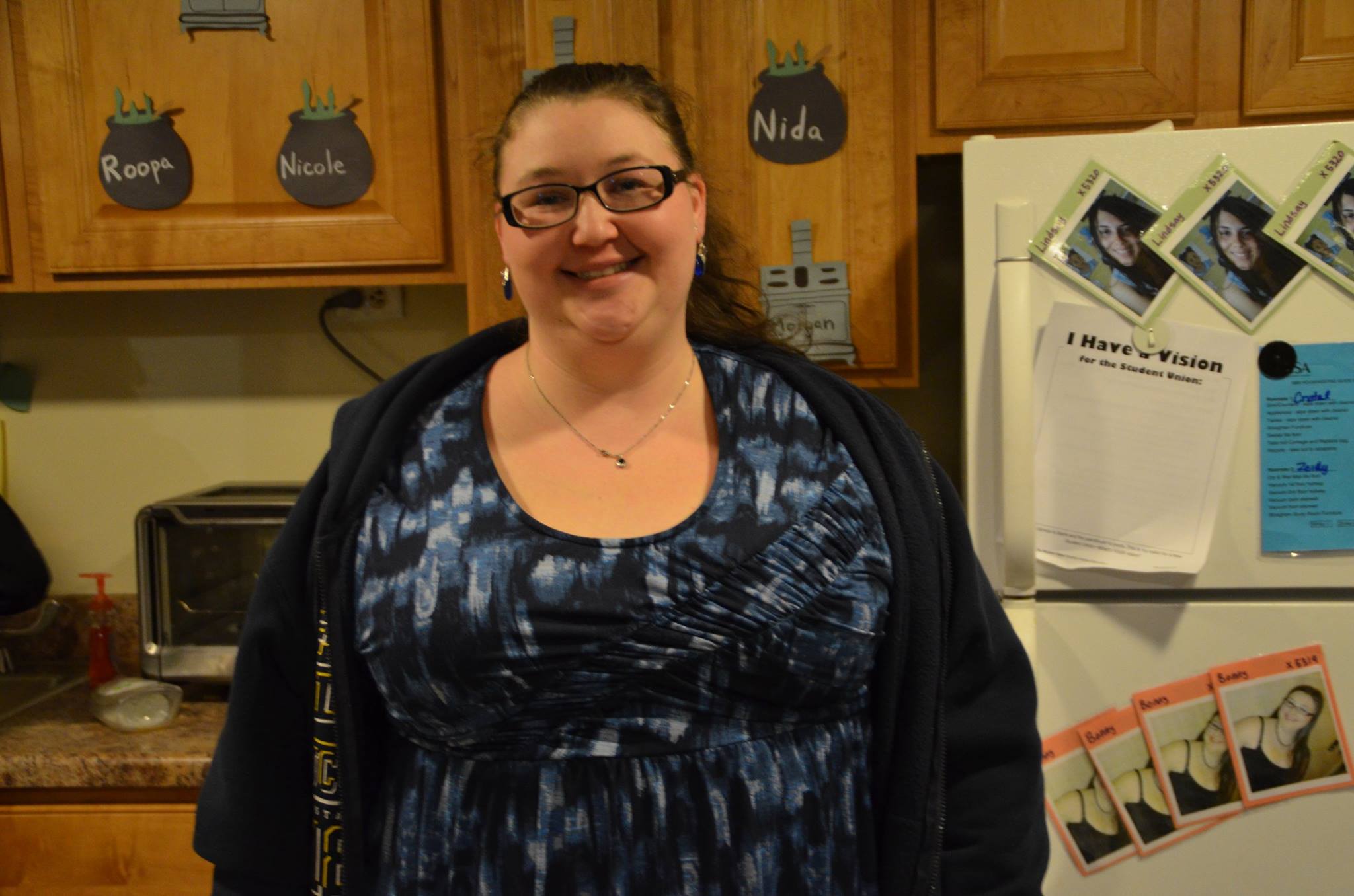“If a tree falls in a forest and no one is around to hear it, does it make a sound?”
Substance abuse is no stranger to us — it is the elephant in the room.
Despite its presence at IMSA and other high schools across the world, adults are quick to avoid conversations about substance abuse among the youth. Students, likewise, follow an unspoken covenant to stray away from the topic. The problem seems silent, invisible, untouchable.
I found myself sitting in the band room well after sunset. Discussions about substance abuse are seldom found outside these hushed, private areas or the occasional droning assembly. The hallways were devoid of any life, and the space was only filled by the dim glow of the ceiling lights and Dmitri’s soft-spoken voice.
Dmitri isn’t his real name. He felt uncomfortable sharing his identity out of fear of the repercussions that may follow from his parents, friends, and teachers. “It’s harder when you understand that you can’t tell someone completely about yourself and [include] a big part of your life. They either won’t get it, or you don’t know how they’re going to react, and that something bad happens and you get into a lot of trouble.
“Coming to terms with the fact that like, sometimes you’re just by yourself and that’s a thing you just have to face, it’s just hard.”
Loneliness was not a concern when it all began. On the surface, Dmitri was like any other high schooler: chugging along with schoolwork, catching up with extracurriculars, and leading a conventional life.
“I’m a pretty boring person, not gonna lie.”
His first experience with illicit substances also arose from unremarkable circumstances. He recalled how, during the summer before his sophomore year, he tried recreational drugs for the first time while hanging out with his friends. It offered another social opportunity during those lazy summer days; but, slowly, it grew into a shared struggle.
“When they introduced me to [using substances], it was just something recreational, for fun. But over time, you can see that [shift] from fun to this self-medicating start to happen, especially when the times get harder.”
Many of his friends saw substances as a necessary evil. Tough living conditions induced by poverty, combined with pressures from schoolwork and socializing, forced them to find a quick escape from bleak realities. Drugs accomplished just that, easing some of the pain that came with daily life.
Unfortunately, Dmitri’s sophomore year was similarly characterized by growing difficulties. New friend circles, increasing academic rigor, and turbulent global conditions all contributed to skyrocketing levels of stress. In search of answers, he turned to the solution that many of his friends found.
“Since you had [easy] access, it’s hard to just say no.”
Dmitri and his friends are just a few among millions of American teenagers who battle substance abuse. According to the National Center for Drug Abuse Statistics, 50% of teenagers have misused drugs at least once, and 62% will have abused alcohol at least once by 12th grade. An astonishing 86% of teenagers know someone who engages in substance abuse during the school day. The National Institute on Drug Abuse reports that the most common reasons for the continual use of substances include social pressure, stressful circumstances, and sheer competitiveness. To many trapped in the face of helplessness, illicit drugs seem like the only path forward.
Yet, despite the overwhelming evidence suggesting that substance abuse is an extremely pervasive problem, the IMSA community still harbors dangerous misconceptions about the issue. The taboo nature of drugs and alcohol shuts off honest dialogue, which reinforces a cruel reality that so many struggling students find themselves trapped in: they have no trusted support system that they can turn to.
For many, finding help from on-campus adults is out of the question. The fear of being punished by disciplinarians deters students from turning to existing resources such as residential counselors and teachers for help. If substance abuse is meant to alleviate academic or social pressure, a suspension or expulsion will only blot out any remaining ray of hope. Other phenomena at IMSA, including surprise drug busts and the lack of overall discourse, contribute to the distrustful climate.
Parents and relatives are also off-limits for many individuals. Whether it be from strict disciplinary consequences or strong cultural stigmas, the pressure associated with communicating drug use to parents deters many from seeking help from within their families. Unfortunately, this unsafe dynamic leads to students navigating a tightrope between accessing professional counseling and risking their emotional or physical well-being within the household.
“I can’t let my parents find out, [they’re] probably not going to find out. This just makes it a lot harder when, already, you feel like you can’t really turn to [your friends] sometimes, especially from IMSA and then your parents, your family…[come with] the mental strain that you are going to get from the lectures [and] all the things that come with strict parents. There’s a lot. Sometimes, you just don’t have that safe environment where you feel like you can tell them, and [getting] to a better place is really challenging.”
For people like Dmitri, communicating with their friends, IMSA-related or not, may be the only option. Students from a similar age range tend to be easier to relate to and more familiar, creating a more comfortable environment for discussion even if they cannot offer professional support or counseling. Yet, pervasive stigmas surrounding illicit substances and addiction lead to extremely hurtful sentiments. The process of constantly hearing counterintuitive advice and having to explain their struggles to underinformed peers further emotionally drains individuals who now have to fight the same battle on multiple fronts: within themselves and with the outside world.
“It was really weird to see how a majority of my friends…didn’t really understand or know people that did [substances] or understand the effects of it…I remember [being] online and then having friends at IMSA, and I would tell them about certain experiences. They’d be like, ‘Oh, just don’t do it.’ And it’s like, well, this is kind of the issue: you can’t just [stop substance abuse] like [that], it’s not that easy.
“The biggest thing is [that] it’s draining to explain to people. At IMSA, I found the people I thought I could trust. I started telling them about [my struggles] and there’s only really been a couple of people that I realized that could really understand this information. Even people that can [sympathize], it’s not like they can relate to what I’m going through. It’s just like, ‘Oh, I am sorry you have been through this.’ Which is like, it’s just really hard when you know you’re in a place where you don’t need someone to [show passive sympathy] with you.”
This perfect storm of general ignorance, occasional negligence, and overall hostility forces students grappling with their addictions to do so quietly, alone. If even their closest friends are liable to further damage their emotional health, then it seems as though there is no way out of this desolate landscape. As a result, too many students continue to struggle and have no safe space to turn to.
If a tree falls in a forest and no one is around to hear it, does it make a sound?
In a way, substance abuse has become a tall tree falling in a forest. As noticeable as it may be, if no one is willing to listen, its presence fades away into nothingness. Even if the cracking of the tree trunk and the rustling of the leaves make a deafening sound, even if affected students continually try to break out of this vicious cycle, what difference does it make when their clamors and cries fall on unresponsive ears?
It becomes easy to play the blame game. IMSA’s administrators and staff are often criticized for holding highly invasive drug searches in the residence halls and confusing students as to what repercussions would take place if they reach out to campus adults for help. IMSA’s students are, conversely, accused of condoning these harmful practices and are expected to report their friends and wing mates if they have any knowledge on substance abuse. All the finger-pointing leads to is an even more fearful atmosphere, with the most vulnerable of people stuck in the middle of a toxic game.
Our status quo cannot be tolerated. We are all responsible for the present condition, so it is our collective burden to initiate change.
Being mindful of the weight of substance abuse when discussing it is essential, both from an adult and a student’s perspective. For adults, having clearer policies on substance abuse and being more transparent in general would increase trust amongst the students. For students, understanding that addiction is a difficult process and knowing when to recommend outside help is important to aid a person’s recovery. Dmitri’s experience seems to reflect this.
“I think the biggest thing is to create a healthy environment around these people so that they could come to…close friends. And then if we need help, [our friends] could provide us with insight to the right direction. But also, the big thing with that is trauma is a [sensitive] thing, right? You might start making people feel uncomfortable, so that’s why I [also] like the counselors coming in to help.”
Still, communication without education is not enough. Even now, IMSA students often try their best to acknowledge their peers’ struggles, but often end up in a situation where they create more harm than good. Not knowing how to appropriately handle issues as nuanced and sensitive as substance abuse can create an even more distrustful atmosphere; conversely, a strong, knowledgeable support system can be the necessary spark to a person’s road to recovery. As a result, informing oneself about addiction is a key priority for the IMSA community at large.
“That’s where a good network and support [system] really comes in. At IMSA, here, I found it. It was a challenge, [but] it [includes] a mix of friends from IMSA, some friends from back home, but your support system is probably one of the things that will help you the most.”
In the end, the most important aspect of understanding addiction is that no matter who it affects, no matter how pervasive it is, struggling with substance abuse does not make a person any less worthy. Empathy, not disdain, is what we need.
“[There is an] environment of when someone realizes that you are addicted, they start to look at you in a different way, like ‘Oh, drugs, [they are] a bad kid. You should stay away from them.’ And that also builds a mindset of, ‘Oh, I cannot tell you more about this because I will be viewed differently.’
“People aren’t necessarily bad because they use substances. [We, as IMSA, are] a community that struggles with addiction more than [we] know.”
Dmitri sighs. Today, he is still searching for answers. Rehab is not an option, and in many ways, he still has not found the lifeline he needs. Yet, not all hope is lost. Towards the end of virtual schooling through the present, Dmitri has started regaining his autonomy. After finding a supportive group of friends and the willpower to get clean, the only path for Dmitri is upwards.
“If I’m going to get better, then I’ll have to do it myself. That is hard, but I feel like I’m doing pretty well right now. There’s still a long way to go, but it’s just realizing that there [are] other methods [to life] than getting high all the time.”
I still remember how he would take the occasional dig at himself, not shying away from the opportunity to make the people around him laugh. It takes so much strength to endure that much pain and still radiate the same sense of personality, to point at that elephant in the room, that toppled tree in the forest, and smile triumphantly.






Be the first to comment on "If a Tree Falls"